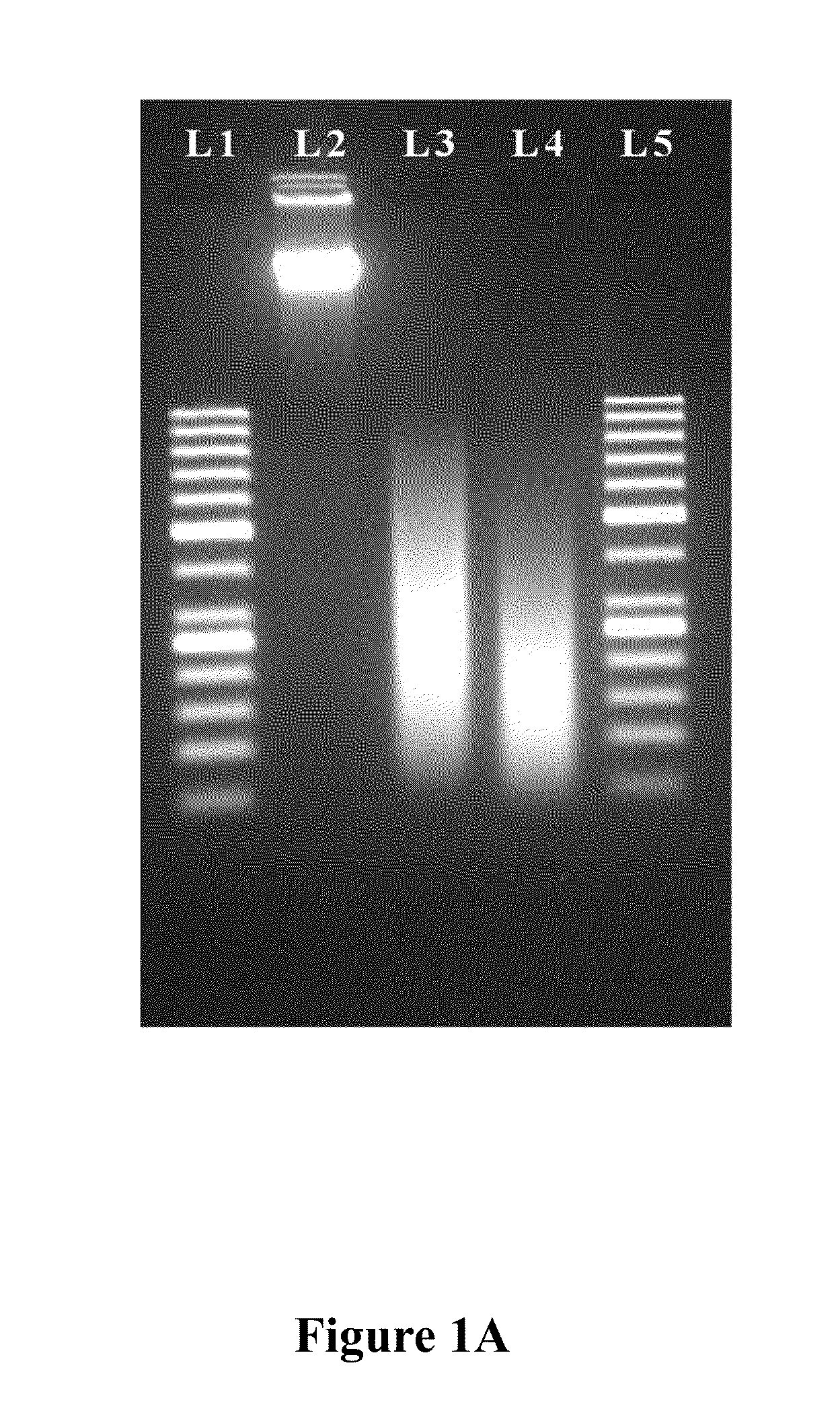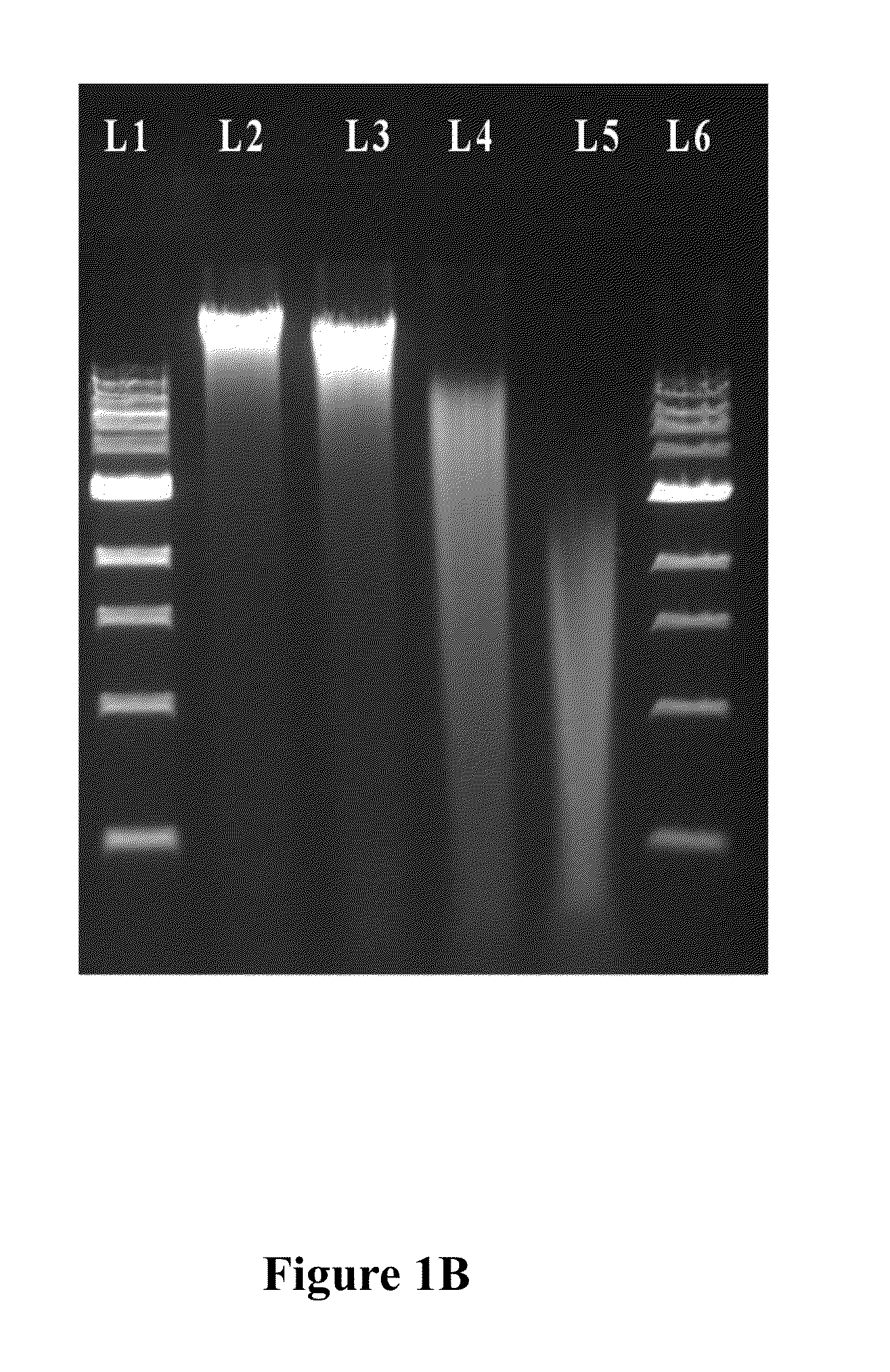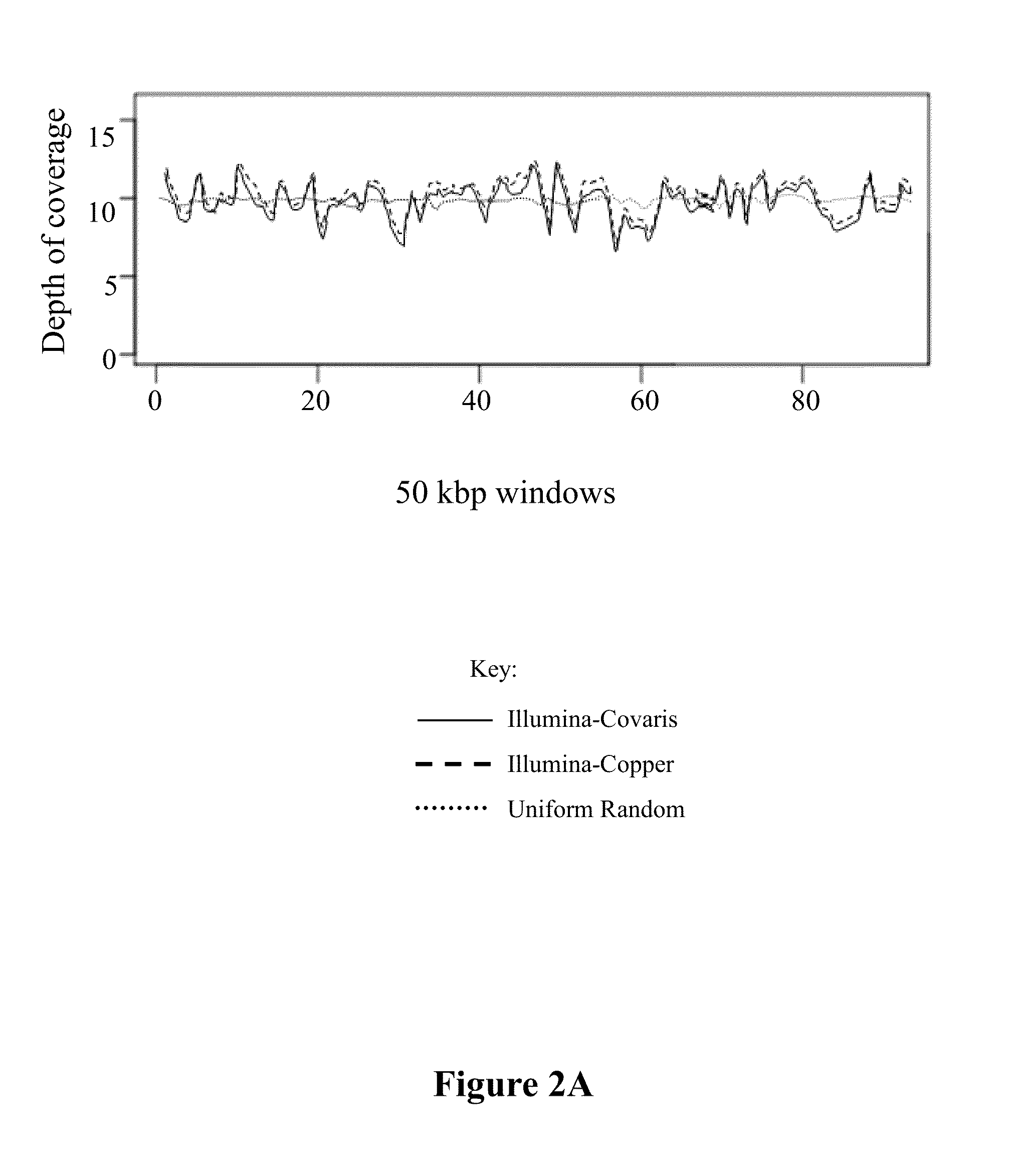Methods and compositions for generating polynucleic acid fragments
a technology of polynucleic acid and fragments, applied in the field of polynucleic acid sample preparation and sequencing, can solve the problems of inability to achieve full automation of sample preparation to date, inability to efficiently produce small fragments, and high cos
- Summary
- Abstract
- Description
- Claims
- Application Information
AI Technical Summary
Benefits of technology
Problems solved by technology
Method used
Image
Examples
example 1
Materials and Methods
DNA Samples
[0071]Human blood samples were purchased from Stanford University Blood Bank (Palo Alto, Calif.). Genomic DNA was extracted using QIAamp DNA Blood Maxi Kit (QIAGEN, Valencia Calif., 91355). Mouse pure genomic DNA and E. coli genomic DNA were purchased from Promega Corporation (Madison, Wis.) and USB Corporation (Santa Clara, Calif.) respectively.
Optimization of DNA Fragmentation Using Metal Ions in Presence of Reducing Agent
[0072]Incubation Time and Concentration of Cupric and Ferric Ions and Sodium Ascorbate. 100 mM CuSO4, FeCl3, and sodium ascorbate (Sigma-Aldrich, Saint-Louis, Mo.) solutions were prepared using milliQ water. Equimolar concentrations of sodium ascorbate and either CuSO4 and or FeCl3 were mixed at varying concentrations ranging from 1 mM to 10 mM, and incubated with 5 ug DNA at room temperature for 30 minutes to induce DNA fragmentation. DNA fragments were recovered as described below. The degree of DNA fragmentation was assessed dur...
example 2
DNA Fragmentation Conditions
[0091]5 ug of DNA was incubated with equimolar concentrations of CuSO4 and sodium ascorbate (2-10 mM) at room temperature for 30 minutes to examine the DNA fragmentation. Fragmented DNA was purified with charge switch beads, resolved in 2% agarose gel and visualized in SYBR Gold as described above. As shown by agarose gel, when reagent concentration increases, the fragmentation of DNA also increases; in fact, the fragmenting of the DNA can be fine-tuned with reagent concentration from a smear to a band. At 6 mM equimolar concentrations of both reagents, and with an incubation time of 30 minutes, the DNA was fragmented in the range of 100-200 bp, the required range for SOLiD sequencing (FIG. 1A).
[0092]DNA was incubated with equimolar concentrations of CuSO4 and sodium ascorbate at 4 mM to obtain fragments in size range of 200-400 bp, the range required for library preparation on the Illumina platform (FIG. 1A).
[0093]In another experiment, using 2 ug DNA an...
example 3
Deep Sequencing of Libraries Prepared from Metal-Based DNA Fragmentation
[0100]The applicability of the metal-based DNA fragmentation system was validated by comparing the sequencing data of libraries prepared by this method to libraries prepared from fragments created using the Covaris Adaptive Focused Acoustics (AFA)™ technology (a widely used method of DNA shearing) for three different genomes (E. coli, Human and Mouse). In Illumina sequencing, 1.87 million reads from AFA-prepared E. coli library and 2.12 million reads from the E. coli library that employed metal-based fragmentation were mapped to the E. coli genome; 95.29% and 94.95% of the E. coli genome was covered respectively, with a mean coverage depth of 9.52× (Table 1).
TABLE 1Summary of read alignments, overall coverage and substitution rates for three genomes (E. coli [1-5] Human [6-9] and Mouse [10-13]) from two next generation platforms (IlluminaGenome Analyzer & SOLiD).Frag-mentationTotalUnique% UniqueSampleSequencerMe...
PUM
| Property | Measurement | Unit |
|---|---|---|
| temperature | aaaaa | aaaaa |
| temperature | aaaaa | aaaaa |
| temperature | aaaaa | aaaaa |
Abstract
Description
Claims
Application Information
 Login to View More
Login to View More - R&D
- Intellectual Property
- Life Sciences
- Materials
- Tech Scout
- Unparalleled Data Quality
- Higher Quality Content
- 60% Fewer Hallucinations
Browse by: Latest US Patents, China's latest patents, Technical Efficacy Thesaurus, Application Domain, Technology Topic, Popular Technical Reports.
© 2025 PatSnap. All rights reserved.Legal|Privacy policy|Modern Slavery Act Transparency Statement|Sitemap|About US| Contact US: help@patsnap.com



